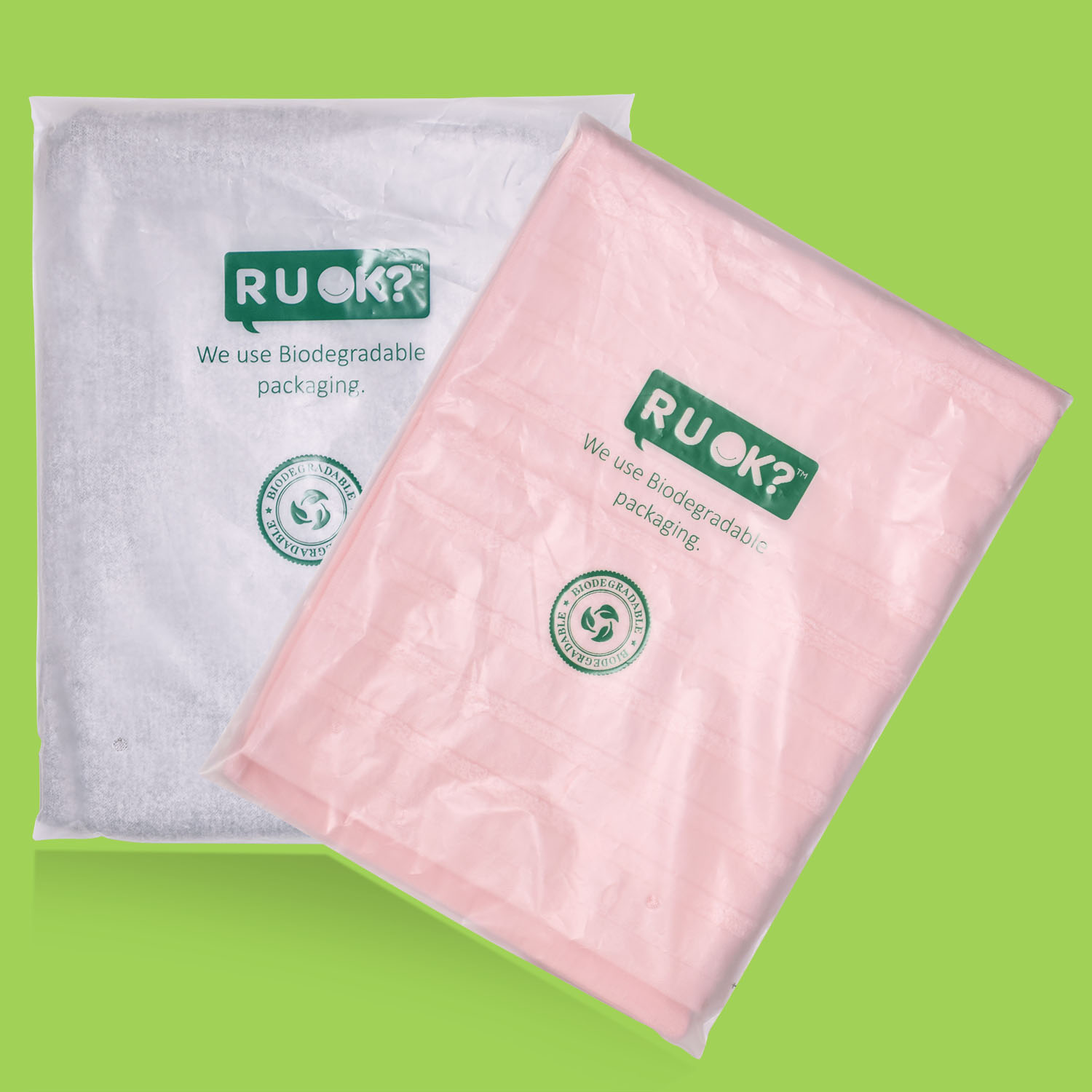Biodegradable packaging bag materials
The main materials used in biodegradable packaging bags include bio-based materials such as polylactic acid (PLA), polybutylene terephthalate (PBAT), and polyhydroxyalkanoate (PHA). These materials can be decomposed into carbon dioxide, water, and biomass by microorganisms under certain conditions, and meet the relevant standards for biodegradable materials.
The materials of biodegradable packaging bags mainly include the following:
- Polylactic acid (PLA): A biodegradable material made from starch raw materials extracted from renewable plant resources (such as corn starch). It has good biocompatibility and biodegradability, can be completely degraded by microorganisms in nature, and finally generates carbon dioxide and water, which will not cause pollution to the environment. PLA also has excellent mechanical properties and processing properties, and is suitable for a variety of fields.
- Polybutylene terephthalate (PBAT): A thermoplastic biodegradable plastic with good biodegradability, thermal stability, mechanical properties and processing properties. It is widely used in packaging, agricultural mulch, fiber and non-woven fabrics. The biodegradation process of PBAT mainly depends on the action of microorganisms, and finally decomposes into carbon dioxide and water, which will not cause long-term impact on the environment.
- Polyhydroxyalkanoate (PHA): It is also a biodegradable material with good biodegradability and biocompatibility, suitable for medical and packaging fields.
- Starch-based materials: Adding a certain amount of additives such as starch, modified starch or other cellulose in the production process of plastic packaging products can improve the degradation performance of plastic packaging.
- Photosensitizers and biodegraders: These additives can promote the degradation of plastics in the natural environment, reduce the stability of plastic packaging, and make it easier to degrade in the natural environment.
- Polyvinyl alcohol (PVA): A water-soluble polymer that can be used as a raw material for biodegradable plastics.
- Polybutylene succinate (PBS): A biodegradable plastic with good biodegradability and processing properties.
- Polypropylene carbonate (PPC): A biodegradable plastic with good biodegradability and mechanical properties.
- Polycaprolactone (PCL): A biodegradable plastic with excellent biodegradability and biocompatibility.
These materials can be used alone or in combination to produce biodegradable packaging bags with different properties and uses. When choosing biodegradable packaging bags, consumers should identify the product’s material, degradation conditions and product standard number, as well as whether there is a “double J” logo and other information to ensure that they buy truly biodegradable products.
Benefits of biodegradable packaging bags to the environment
The benefits of biodegradable packaging bags to the environment are mainly reflected in the following aspects:
- Reduce white pollution: Biodegradable packaging bags can be decomposed by microorganisms under certain conditions to generate carbon dioxide and water, thereby reducing long-term pollution to the environment and helping to alleviate the so-called “white pollution”.
- Save resources: The use of biodegradable plastics can reduce dependence on traditional petroleum resources and promote the use of renewable resources such as starch and straw as raw materials, which are widely present in nature and can be recycled.
- Reduce greenhouse gas emissions: Biodegradable plastics can significantly reduce greenhouse gas emissions compared to traditional plastics during the degradation process, because the carbon dioxide they release during degradation can be absorbed by plants and converted into organic matter to form a carbon cycle.
- Promote ecological balance: The decomposition of biodegradable packaging bags in the natural environment helps maintain ecological balance and avoid harm to wild animals and plants, such as avoiding casualties caused by animals accidentally eating plastics.
The impact of biodegradable packaging bags on the environment
There are also some potential problems with the impact of biodegradable packaging bags on the environment:
- Restrictions on degradation conditions: The degradation of biodegradable plastics usually requires specific conditions, such as high temperature, high humidity, and the presence of microorganisms. In daily life, these conditions are often difficult to meet, resulting in biodegradable plastics may not degrade as quickly as expected.
- Energy consumption and emissions during the production process: The production process of biodegradable plastics may consume a lot of energy and produce a certain amount of pollutants, such as dust, exhaust gas, etc., and effective pollution prevention and control measures need to be taken.
- The impact of additives and mixed materials: In order to improve the performance of biodegradable plastics, some difficult-to-degrade additives may be added or mixed with non-biodegradable materials, which may affect its final degradation effect.
- Recycling and treatment issues: Biodegradable plastics may be incompatible with the recycling system of traditional plastics, and a separate recycling and treatment system needs to be established, which may bring additional logistics and management costs.
Biodegradable packaging bags play a positive role in reducing environmental pollution and promoting sustainable development, but in practical applications, it is also necessary to consider the possible environmental impacts during their production, use and final treatment.


